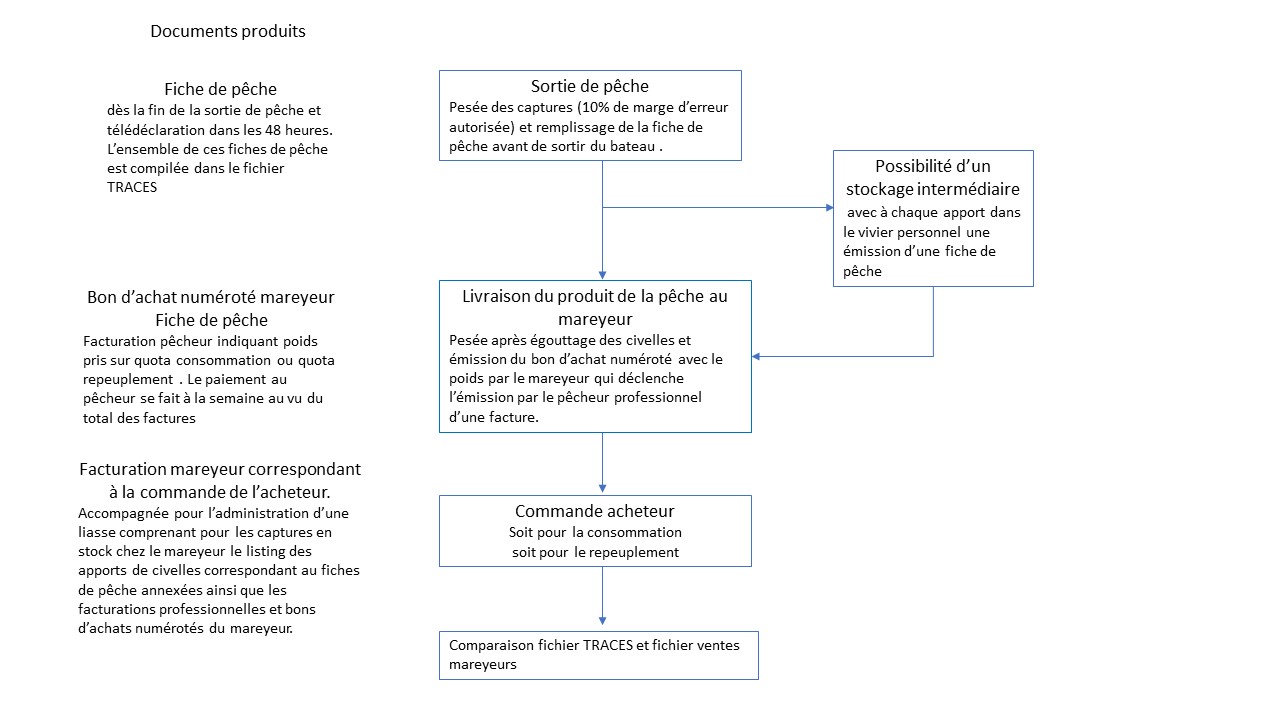Traceability Criteria
Towards full traceability of professional fishing and fish trade.
Professional glass eel fishing in France is one of the best controlled. From its capture, landing, transport to the fish monger, storage and transport to the end user for consumption and restocking.
Of course, there is and always will be some frauds, given the price paid by the Asian market for this fry, which is five times higher than that paid by the European market, but this has always been tackled by the French eel industry and the AFPMAR has made as a major objective the transparency of the activity of its members and the trade that this generates. The attached diagram shows schematically the different stages of control that the fisherman and the fishmonger undergo from catch to sale to the end user.
